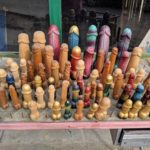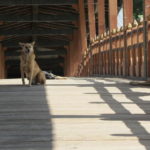Happy Holidays all. I hope things are grand in your world. We just wrapped up a one week trip to Bhutan, also known as the Kingdom of Happiness. Since most people haven’t been to the Kingdom, I thought I’d give a short primer filled with a mix of fun facts and an overview of the most common religious objects used in Buddhism. Sound good??
Where IS Bhutan anyways?
Bhutan is a country (Kingdom, officially) the size of Switzerland that is bordered by India and China (Tibet). It has about 750,000 citizens and you can only get there from 5 or 6 other cities by airplane (Kolkata, New Delhi, Singapore, Bangkok, Dhaka).

Speaking of flying… the airport in Paro is rumored to be the most dangerous in the world. Only 16 pilots are qualified to land there. Whoa, huh? Landings are difficult for two reasons: 1.) the runway is only 1000 meters (about half the length of a typical runway) and 2.) the landing requires 3 to 4 sharp turns navigating through the mountains when going in or out. I must say though, the views were spectacular! Check this out…
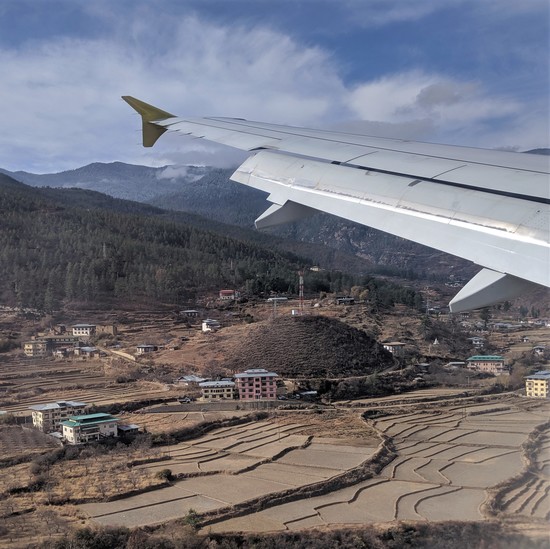
10 Fun Facts About Bhutan
- Bhutan is the only carbon NEGATIVE country in the world, thanks to the fact that 2/3rds of its land is protected forests.
- Bhutan only opened itself to tourism in the 1960’s and kept itself largely isolated until 1974, when it allowed the media to broadcast the new King’s coronation.
- Bhutan was among the last countries in the world to adopt television in 1999. Before that it was banned.
- The Bhutanese receive free schooling (through Master’s Level) and healthcare from the government.
- The national sport of Bhutan is archery. Basketball and cricket are also gaining popularity.
- Plastic bags have been banned in Bhutan since 1999. I did not see an entire piece of litter our entire trip!
- Bhutan has surprisingly never been conquered.
- There are no traffic lights in Bhutan!
- Inheritance (land, house, and animals) is generally passed to the eldest daughter rather than the eldest son. A man often moves into the home of his new wife until he can cover expenses for his family.
- Bhutan became a constitutional monarchy with a two-party system in 2008. The current royal family is very popular and favorably viewed by the people. Their pictures are everywhere – in restaurants, shops, hotel bedrooms, street signs. Here’s what they look like:
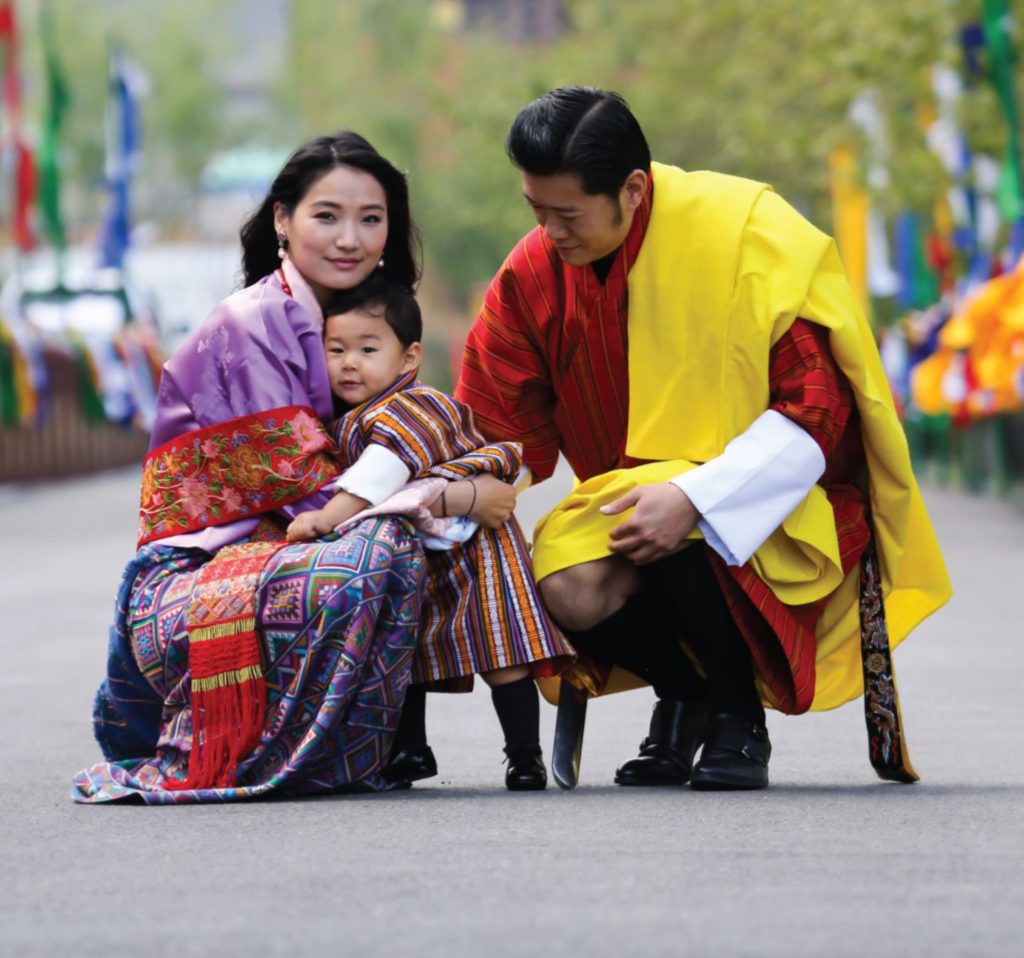
All of these factors contribute to the uniqueness of Bhutan. I think the best way to describe it is that it feels like you’ve gone back in time 20 to 30 years. Although they’ve adopted technology (phones were very prevalent), life continues to remain very simple, which I would guess is due largely to the huge influence Buddhism has on daily life. Roughly 75% of Bhutanese people follow Vajrayana Buddhism, the state religion.
Buddhist Religious Objects
As you might guess, we learned a lot about Buddhism during our short stay there. Prayer flags were a very common site. There were two types. The white was strung up when someone died. The multi-colored ones are meant to represent the 5 elements and it is believed that health and harmony are produced through the balance of these 5 elements, which is why you always see the colors rotating. Prayer flags are typically inscribed with mantras or prayers for long life or good fortune.
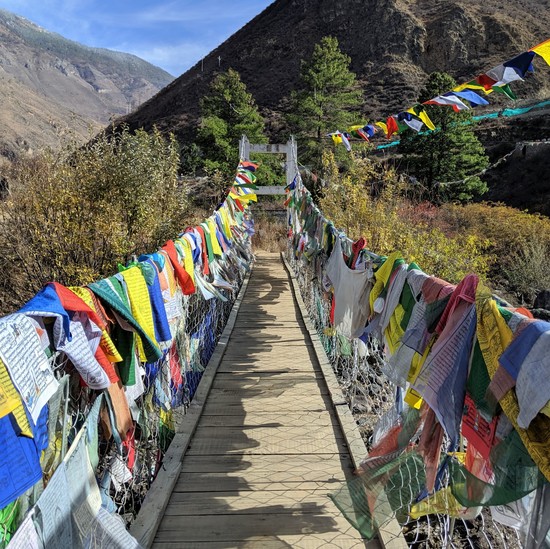
Another religious item we saw frequently were prayer wheels. We saw old people spinning hand prayer wheels (called “manis”) like the one shown below.
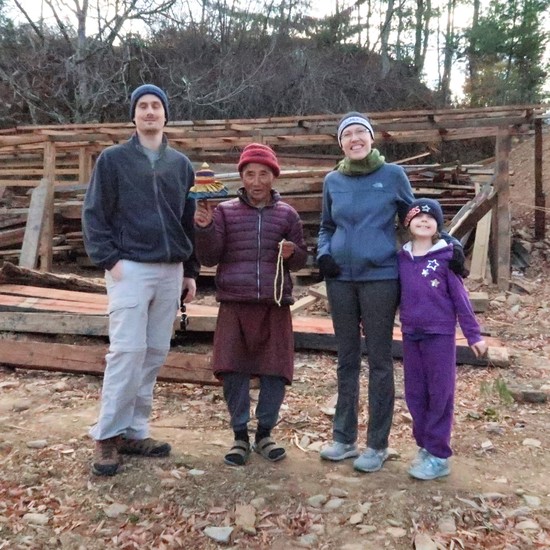
There were also stationary prayer wheels in a line, like these.
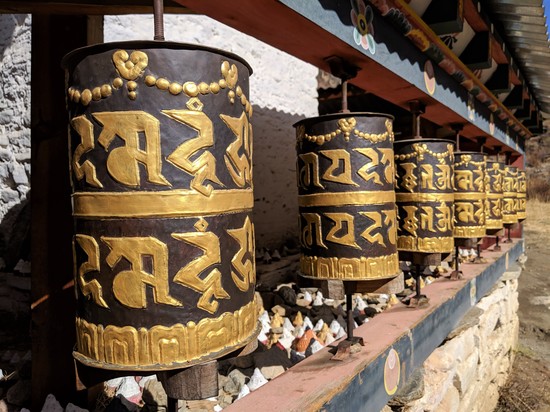
And some were very large, like the ones below. The commonality between them all is that they have mantras inscribed on them and you are meant to recite the mantras as you spin them around in a clock-wise direction.
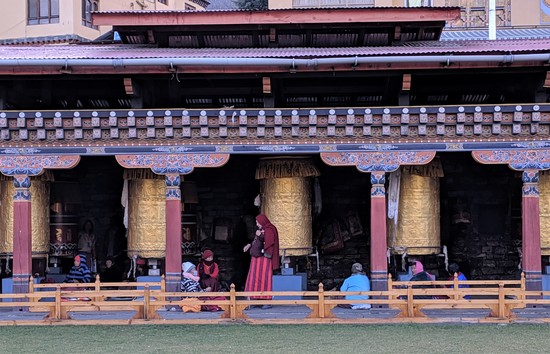
We also got introduced to something called a stupa, which is a mound-like structure containing relics that is used as a place of meditation. The one we visited in Thimphu was in Memorial to the third king of Bhutan.
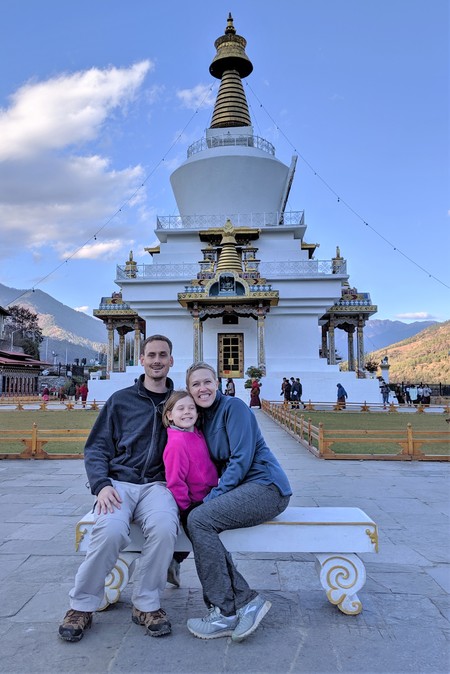
There were also mini versions of stupas (also called a Tsa-Tsa) that Bhutanese people use to commemorate life moments. For example, when someone dies, the family is required to hang a white strand of prayer flags and place 108 mini white stupas around to honor the deceased person. In contrast, the gold stupas signify life, and an individual must set these out on their birthday – one for each year of life. Essentially, each stupa is an ancient prayer for the well-being of a beloved human – whether still living or departed. We took care never to jostle them, as it was clear they were very precisely placed. I should also mention that they are typically made at home, not purchased pre-made.
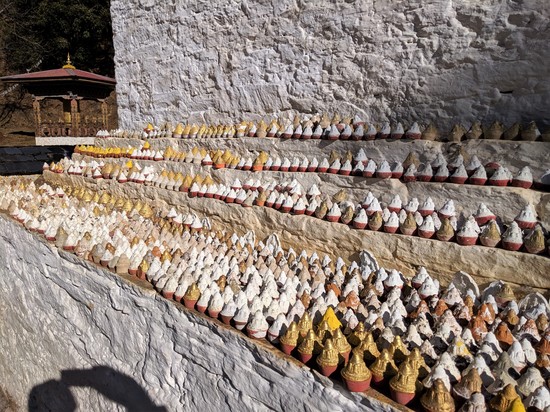
Well that seems like a good amount of info for today. Hope you found it interesting. Will try and do one last post about Bhutan in the days to come. In the meantime, have a marvelous holiday celebration with your loved ones!
Sources: Wikipedia, https://www.holidify.com/pages/facts-about-bhutan-2365.html, https://www.tripsavvy.com/interesting-bhutan-facts-1458607, https://www.onceinalifetimejourney.com/once-in-a-lifetime-journeys/asia/18-surprising-facts-about-bhutan/
